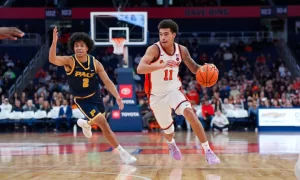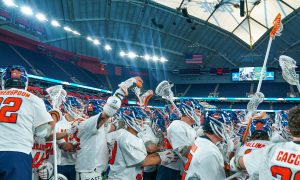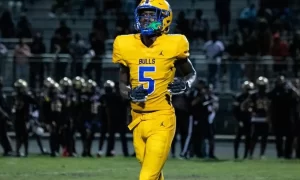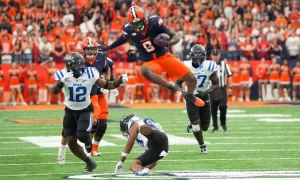Everyone has a unique method to his or her madness when it comes to picking NCAA Tournament first round upsets. The Fizz’s Craig Hoffman does some hardcore underdog scouting.  Following the experts’ picks is definitely an option. Or, you could just go by the most ridiculous mascots (though that would entail selecting the St. Peter’s Peacocks to upset Purdue, which would be pushing the upset envelope a little much for my taste).
The art of selecting the right upsets is challenging to pick up, if not completely based on luck. I’ve certainly had my struggles over the years keeping my bracket relatively clean, so this time around I decided to turn to sources of knowledge beyond my own brain to try and find a solution.
Curious to see if the numbers had anything interesting to say about who’s going to pull off the shockers Thursday and Friday, I found some people who know a little something about mathematics – Harvard students.
One member of the Harvard Sports Analysis Collective created an upset-predicting logistic model that apparently worked pretty well in 2010.
“The model was not bad: it correctly identified Murray State over Vanderbilt as a good choice and suggested St. Mary’s run to the Sweet 16.”
Here’s the most notable finding from his revamped 2011 model.
“Interestingly, none of the shooting percentage stats (effective field goal percentage for and against) were significant predictors of upsets. Neither was free throw rate or seed. The best predictors were turnover rates, rebounding rates, and Strength of Schedule.”
Sounds like a good news for Syracuse if the model proves accurate once again. Obviously, the Orange plays a brutal schedule just by virtue of being in the Big East. This is a battle-tested team. The same cannot be said about Indiana State.
SU has also out-rebounded its opponents this year by 3.6 boards per game. Meanwhile, ISU won’t send a player taller than 6’8’’ onto the Quicken Loans Arena hardwood, exaggerating the rebounding advantage for Rick Jackson and Co.
 Finally, you might look at “turnover rates” and cringe, but that’s actually a positive for the Orange, as well. As much flack as fans like to give Scoop Jardine and his fellow decision-makers for being too sloppy with the basketball, statistically Syracuse takes better care of the rock than its opponents. That’s a product of Jim Boeheim’s havoc-causing zone.
Finally, you might look at “turnover rates” and cringe, but that’s actually a positive for the Orange, as well. As much flack as fans like to give Scoop Jardine and his fellow decision-makers for being too sloppy with the basketball, statistically Syracuse takes better care of the rock than its opponents. That’s a product of Jim Boeheim’s havoc-causing zone.
By the way, someone should tell the Per’fesser he can stop worrying about how many free throw attempts his squad gets, because he was pretty aggravated about  that following the UConn loss.
Not surprisingly, with the model’s emphasis placed on SOS, turnovers, and rebounding, the Orange is a heavy favorite (even more than a three seed would normally be a heavy favorite). The model gives the Sycamores a 3.14 percent chance at victory, the second lowest chance among all games involving 11, 12, 13, and 14 seeds. The only team in that group with more of a gimme than the Orange is Purdue (though I’ll still be pulling hard for the Peacocks).
How about the most likely upsets? A couple of other Big East teams are involved. Marquette is could very well upset Xavier, according to the study, and Georgetown is probable to be sent packing by USC.
But know that the opposite can happen as well, because this is March Madness, which doesn’t take place on paper.
Posted: Andrew Kanell























